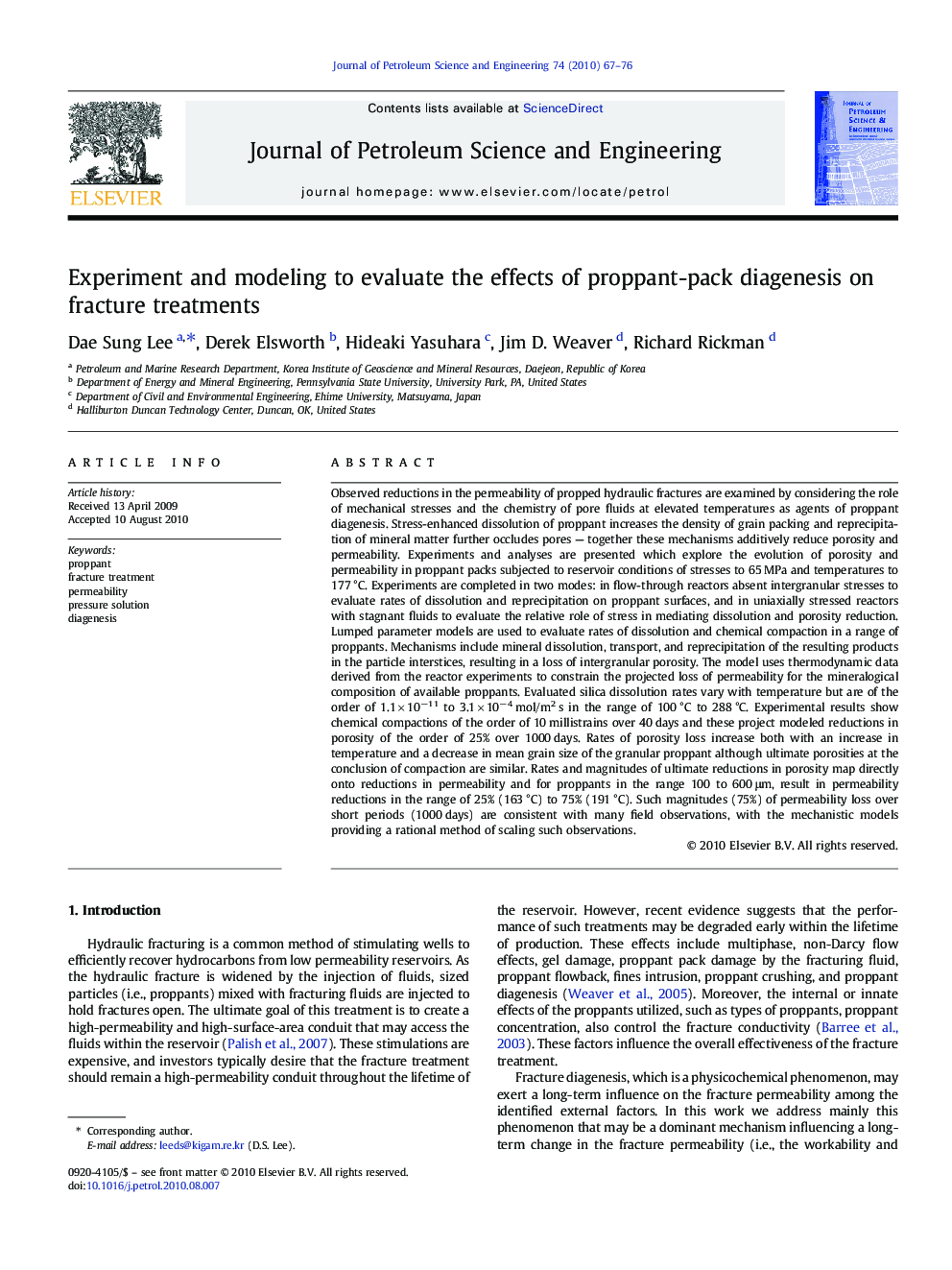| Article ID | Journal | Published Year | Pages | File Type |
|---|---|---|---|---|
| 1755802 | Journal of Petroleum Science and Engineering | 2010 | 10 Pages |
Observed reductions in the permeability of propped hydraulic fractures are examined by considering the role of mechanical stresses and the chemistry of pore fluids at elevated temperatures as agents of proppant diagenesis. Stress-enhanced dissolution of proppant increases the density of grain packing and reprecipitation of mineral matter further occludes pores — together these mechanisms additively reduce porosity and permeability. Experiments and analyses are presented which explore the evolution of porosity and permeability in proppant packs subjected to reservoir conditions of stresses to 65 MPa and temperatures to 177 °C. Experiments are completed in two modes: in flow-through reactors absent intergranular stresses to evaluate rates of dissolution and reprecipitation on proppant surfaces, and in uniaxially stressed reactors with stagnant fluids to evaluate the relative role of stress in mediating dissolution and porosity reduction. Lumped parameter models are used to evaluate rates of dissolution and chemical compaction in a range of proppants. Mechanisms include mineral dissolution, transport, and reprecipitation of the resulting products in the particle interstices, resulting in a loss of intergranular porosity. The model uses thermodynamic data derived from the reactor experiments to constrain the projected loss of permeability for the mineralogical composition of available proppants. Evaluated silica dissolution rates vary with temperature but are of the order of 1.1 × 10−11 to 3.1 × 10−4 mol/m2 s in the range of 100 °C to 288 °C. Experimental results show chemical compactions of the order of 10 millistrains over 40 days and these project modeled reductions in porosity of the order of 25% over 1000 days. Rates of porosity loss increase both with an increase in temperature and a decrease in mean grain size of the granular proppant although ultimate porosities at the conclusion of compaction are similar. Rates and magnitudes of ultimate reductions in porosity map directly onto reductions in permeability and for proppants in the range 100 to 600 μm, result in permeability reductions in the range of 25% (163 °C) to 75% (191 °C). Such magnitudes (75%) of permeability loss over short periods (1000 days) are consistent with many field observations, with the mechanistic models providing a rational method of scaling such observations.
